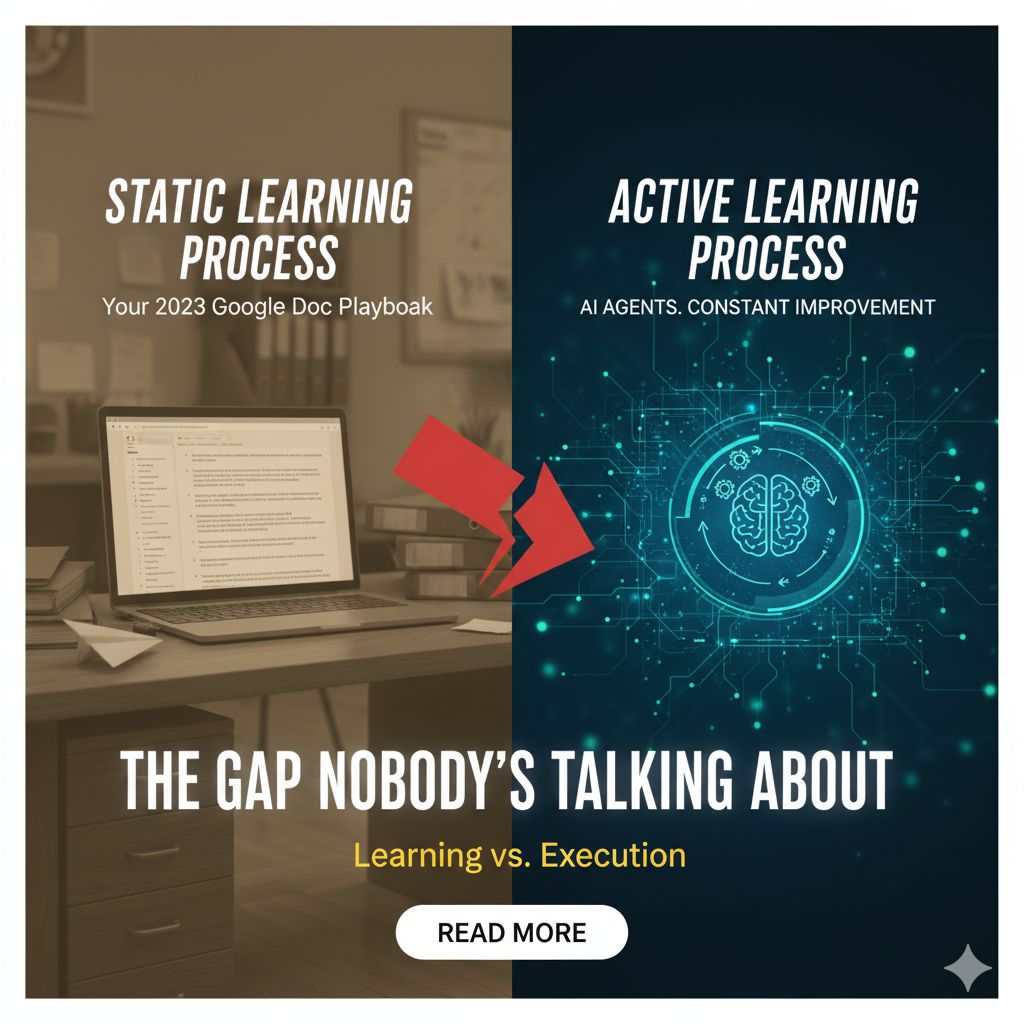Your competitor just ran the same sales process 47 times this month. Each time, their system got slightly better—learning which objections matter, which follow-up timing works, which pricing moves close deals.
Your sales process? Still the same Google Doc from 2023 or worse something you just make up each time.
The Difference Between Static and Active Learning Processes
You've documented your best practices, created your SOPs, and built your playbooks. They sit in Notion or Trainual, gathering digital dust between quarterly (or annual or never?) reviews.
Meanwhile, some of your competition embedded those same processes into agents. But they went further: they built feedback loops. Every execution feeds data back into the system. Every outcome updates the playbook. Every iteration makes the next execution better.
The math is brutal. If your competitor improves their core processes 10% each month through agent learning, they compound at 3.1x effectiveness over a year. You're running the same playbook you built in 2023. Who wins that race?
How Processes Actually Learn
I run a research agent that captures insights every time I read an article, review a client situation, or spot a pattern worth remembering. It maintains running logs on specific topics—how to write better newsletters, how to structure coaching calls, how to diagnose team dysfunction.
Every few weeks, I review what the research agent collected. The good insights get promoted into my working agents. My newsletter agent now incorporates 4 months of tracked learnings and counting about what resonates with business owners. It also ingests outputs from my Beehiiv dashboard, including open rates, click patterns, and which topics drive engagement.
The newsletter agent doesn't just execute a static template anymore. It executes based on accumulated knowledge about what actually works. Each newsletter teaches the system something. The next one benefits from that learning.
This is how agents become assets instead of automation.
Why Early Movers Win Disproportionately
Two reasons you need to start building learning agents now, not later.
First, the advantage compounds over time. The business that starts capturing learnings today has 12 months more accumulated knowledge than the one that starts next year. You can't buy your way to that advantage. You can't hire your way there. You have to build the iteration count.
Second, the portability problem gets solved early or never. If you embed your accumulated business knowledge into one specific AI platform or model, you're locked in when that platform gets disrupted or priced inefficiently. But if you design your system to move between models and platforms while preserving your core knowledge layer, you have strategic flexibility.
I built my agent system knowing Claude won't be the best model forever. My research files, my playbooks, my accumulated learnings are all structured to port between systems. When a better model or platform emerges, I migrate my knowledge forward. I keep the compounding advantage.
The businesses that embed everything into ChatGPT's custom instructions or Anthropic's Projects without abstraction are building on sand. The model will change. The platform will evolve. Your knowledge should persist independently.
What You Can Do
We’re helping business owners build AI agent systems that actually run parts of the business for them from marketing to operations to client delivery.
OwnerRx is currently working with a small group of early clients to design and deploy these systems inside real companies. If you want to see how this works, or get early access before we open it up more broadly, sign up here.

